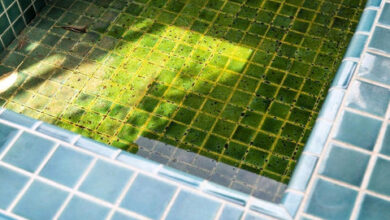
The Types of Mold That Can Grow in Your Home
Have you ever wondered if you have mold growing in your home? Perhaps you’ve seen suspicious stains on your walls or under the sink. But you can’t put your finger on what they might be.
Mold can cause all kinds of ailments if you’re exposed to it long enough. Unless you’ve been testing the substance every time you pop back into your abode, it can be hard to decipher whether it’s toxic or not.
If you’ve been concerned about mold that could potentially make you sick, you’ve come to the right place. Keep reading to learn about the different types of mold you should look for in your home.
Table of Contents
Various Types of Mold That Can Grow in Your Home
Mold is a type of fungi that can grow in your home and cause damage to your property. Molds can vary in appearance, from black, white, and green to blue. Some molds can also be fuzzy or slimy.
Stachybotrys chartarum, or black mold, is a type of mold that often grows on wet materials, such as insulation, paper, or cloth. Black mold is dark green or black in color, and has a slimy texture. Black mold is highly toxic and can cause severe health problems when you are exposed to it.
White mold is not as dangerous, but it can still cause damage to your property. Green mold is the least dangerous type of mold and is often used in the food industry. Green mold is not typically harmful to humans unless you’re allergic, but it can cause plant problems.
Health Risks Associated With Mold Exposure
Many different types of mold can grow in your home, each with its own set of health risks associated with exposure. Black mold, for example, is one of the most toxic types of mold and can cause serious respiratory problems, skin irritation, and even organ damage. Other less dangerous but still potentially harmful types include white mold, green mold, and brown mold.
While most people are not allergic to mold, some people may experience respiratory problems, skin irritation, or other health problems when exposed to it. If you suspect mold growing in your home, it is crucial to have it professionally removed to avoid any potential health risks.
Signs of Mold Growth and Where To Find Them
Mold can cause respiratory illness and other health problems, so it is essential to be aware of the signs of mold growth in your home. These signs include musty odors, visible mold spores, and water damage. Discoloration on walls or ceilings is also visible when there is mold growth.
When looking for signs of mold growth, it is best to check places where they’re most likely to grow. The most common places to find mold are in damp areas, such as the bathroom, kitchen, or basement. Mold can also be found in areas with a lot of condensation, such as around windows or attics.
Molds can also be found outside your home, like on your lawn. Outdoors, mold can grow in moist areas such as soil, leaves, and crop residue.
How Mold Grows in Your Home
Some molds need moisture to grow, while others can grow in dry environments. Some molds can grow on wood, while others need paper or cloth.
In addition, there are also molds that can grow in highly acidic or basic conditions, while others need neutral conditions. The most important thing to remember is that mold can grow anywhere there is food and moisture. So it is important to keep your home clean and dry to prevent mold growth.
Get Rid of Mold If You Already Have It
If you suspect you have mold in your home, you should take steps to get rid of it. It is important to be aware of the dangers and take steps to protect yourself and your family. Mold can spread quickly, so it’s essential to identify and remove it as soon as possible.
In getting rid of mold, you must first identify what type it is before you take action to remove it. You can use various products to remove mold, but it’s essential to read the labels carefully and follow the directions. You can also use vinegar and baking soda to get rid of molds.
Some types of mold can be removed with household cleaners. But others require specialized equipment and training. Removing mold yourself can also worsen the problem by disturbing the mold and releasing spores into the air.
Prevent Mold from Growing in Your Home
To prevent mold from growing in your home, it is important to keep an eye out for any potential sources of moisture. Then take steps to dry out any wet areas as soon as possible. Additionally, it would be best if you kept your home well-ventilated to discourage the growth of mold spores.
As said earlier, moisture is one of the biggest factors contributing to the growth of molds. If you notice water damage in your house, do something about it immediately before mold starts growing. You can call for a water damage restoration service to help you with this.
Getting Familiar With the Types of Mold in Your Home
If you suspect mold in your home, it is important to identify the type to determine the best way to remove it. Although there are many types of mold, only a few are commonly found in homes. These include black mold, white mold, green mold.
If you do have mold, there are various ways to treat it, depending on the type of mold you have. You can also contact a mold removal specialist to remove it properly. Once it’s removed, it is best to take measures to prevent it from growing again.
Did you enjoy this article? Then take a look at our other home improvement contents found in our blog!








